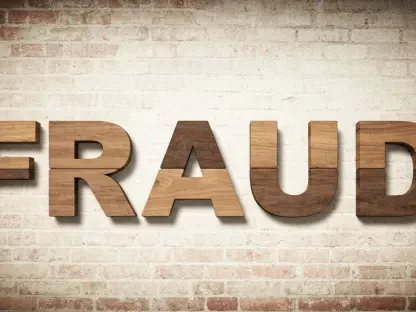In a significant move aimed at fostering competitive markets, the Department of Justice (DOJ) has unveiled an Anticompetitive Regulations Task Force. This specialized unit is tasked with identifying and eliminating government regulations that inhibit fair market competition. Managed by the DOJ’s Antitrust Division, the task force is leveraging its market expertise to pinpoint and address regulations that pose barriers to economic growth. The initiatives of this task force align with two executive orders aimed at deregulation and a comprehensive review of existing regulations, signaling a decisive push towards reducing governmental overreach in various sectors.
Identifying and Eliminating Inhibitive Regulations
Public Inquiry and Initial Sectors of Focus
The task force’s initial step involves a 60-day public inquiry to gather input from businesses, consumers, and other stakeholders on laws and regulations that may impede competition. This open call is aimed at identifying sectors where regulatory constraints are most burdensome, particularly those crucial to American households. During this period, affected parties are encouraged to highlight specific regulations that favor larger, established corporations at the expense of smaller entities.
Assistant Attorney General Abigail Slater emphasized that the task force is particularly focused on dismantling regulations that disproportionately benefit big businesses. Target sectors include healthcare, housing, food and agriculture, transportation, and energy. For instance, in healthcare, current regulations often impede the provision of low-cost, high-quality care and incentivize consolidation and overbilling, making affordable healthcare unattainable for many families. Identifying such regulations is a critical first step in fostering a more competitive and equitable market environment.
Task Force Structure and Methodology
The task force comprises attorneys, economists, and other professional staff from the Antitrust Division and other agencies, all working collaboratively to modify or eliminate harmful regulations. Their methodology includes comprehensive reviews of regulatory frameworks, economic analysis, and stakeholder consultations. Additionally, the task force may engage in advocacy, such as submitting amicus briefs or commenting on state legislative proposals, to ensure that their regulatory reforms have broad-based support and practical impact.
This initiative is part of a broader trend of deregulatory efforts, reflecting the administration’s commitment to reshaping regulatory landscapes across various sectors. The Federal Trade Commission (FTC) has similarly restructured under new leadership, with FTC Chair Andrew Ferguson criticizing past administrations for their regulatory approaches. Ferguson has advocated for reducing the number of consumer protection cases and terminating regulatory ambitions, such as those concerning artificial intelligence.
Executive Orders and Policy Implications
“10 to 1” Deregulation Policy
President Trump’s executive orders introduced a stringent “10 to 1” deregulation policy, requiring agencies to abolish ten existing rules for every new one implemented. This policy aims to significantly reduce the regulatory burden on businesses, fostering a more dynamic and competitive economic environment. In healthcare, for example, this policy could lead to the rollback of initiatives like Patients Over Paperwork, designed to reduce documentation burdens, or the elimination of staffing mandates imposed by previous administrations.
The “10 to 1” policy embodies the broader vision of achieving an economic “Golden Age” by removing barriers that restrict free market competition. By dismantling cumbersome regulations, the administration hopes to create a more fertile ground for innovation and entrepreneurship, leading to economic growth and increased opportunities for smaller businesses. This deregulatory approach is expected to have a profound impact on industry structures, potentially reshaping entire sectors to better reflect the principles of free market competition.
Potential Challenges and Criticisms
While the task force’s objectives are clear, the path to achieving them is likely to be fraught with challenges. Critics argue that excessive deregulation could lead to reduced consumer protections and increased market volatility. There are concerns that the removal of regulations, particularly in sectors like healthcare and energy, could result in negative externalities, such as lower standards of care or environmental degradation. Balancing the need for competitive markets with the imperative to protect public interests will be a key challenge for the task force.
Moreover, there is skepticism about the actual impact of the “10 to 1” policy. Some experts question whether it is possible to eliminate regulations at such a high rate without inadvertently removing safeguards that protect consumers, workers, and the environment. The task force will need to carefully consider each regulation’s broader implications and ensure that their deregulatory efforts do not compromise essential protections.
Future Prospects and Considerations
Long-Term Implications
The long-term implications of the DOJ’s task force and associated deregulatory efforts are likely to be far-reaching. If successful, these initiatives could lead to a more dynamic and competitive economy, characterized by increased innovation and lower barriers to entry for new businesses. Smaller companies could find it easier to compete with established players, leading to a more level playing field and broader consumer choice. In sectors like healthcare, housing, and energy, reduced regulatory burdens could translate into lower costs and better services for consumers.
Next Steps for Stakeholders
The Department of Justice (DOJ) has taken a significant step to promote competitive markets by establishing an Anticompetitive Regulations Task Force. This specialized unit’s main objective is to identify and eliminate government regulations that hinder fair market competition. Operating under the DOJ’s Antitrust Division, the task force uses its market expertise to find and address regulations that impede economic growth. This initiative aligns with two executive orders focused on deregulation and a thorough review of existing regulations, highlighting a strong effort to minimize governmental overreach across various sectors. By scrutinizing and improving regulatory practices, the task force seeks to foster a more dynamic and competitive economic environment, ultimately benefiting consumers, businesses, and the overall economy. This proactive approach indicates a determined push towards enhancing market efficiency and supporting sustainable growth through fair competition.









